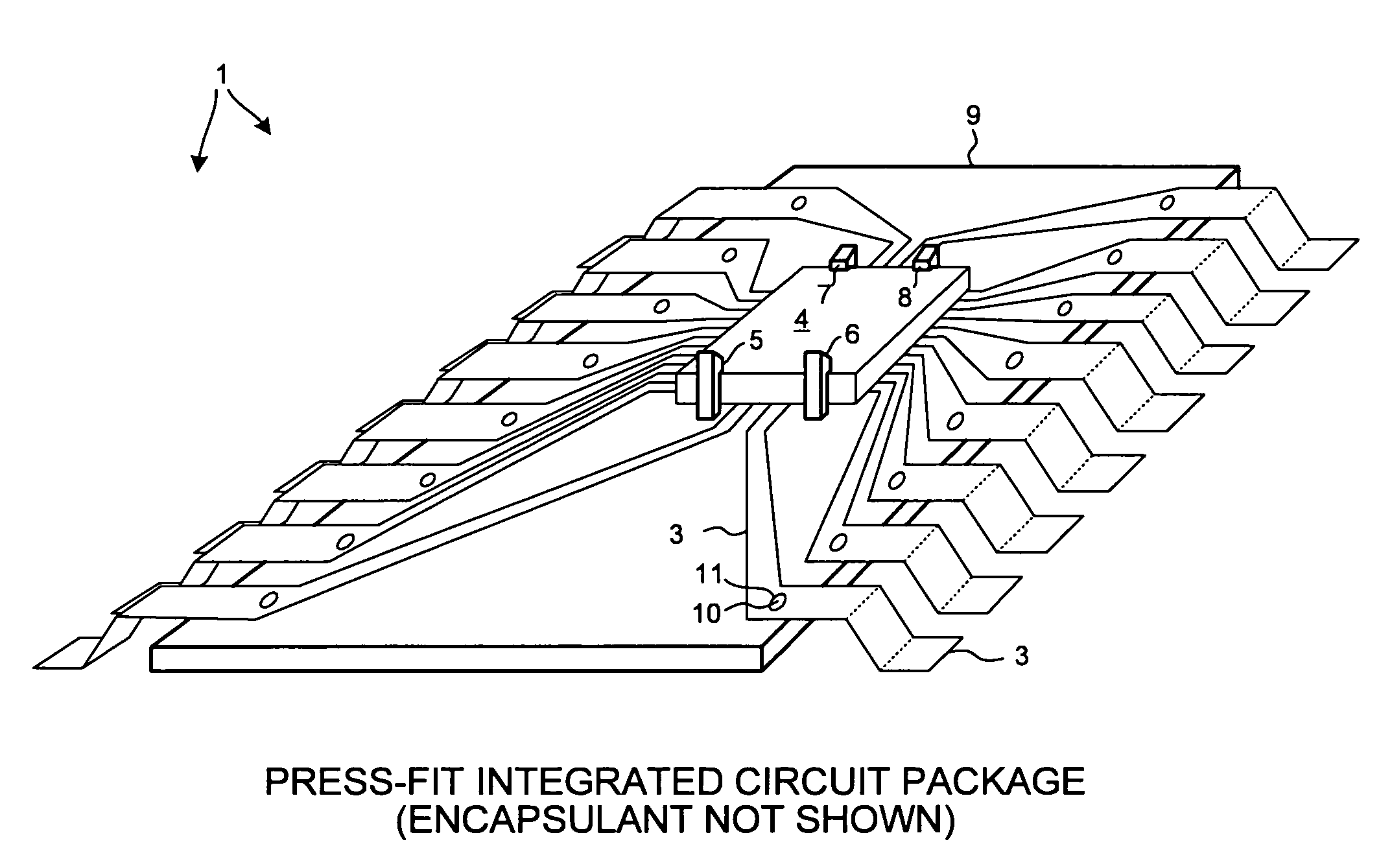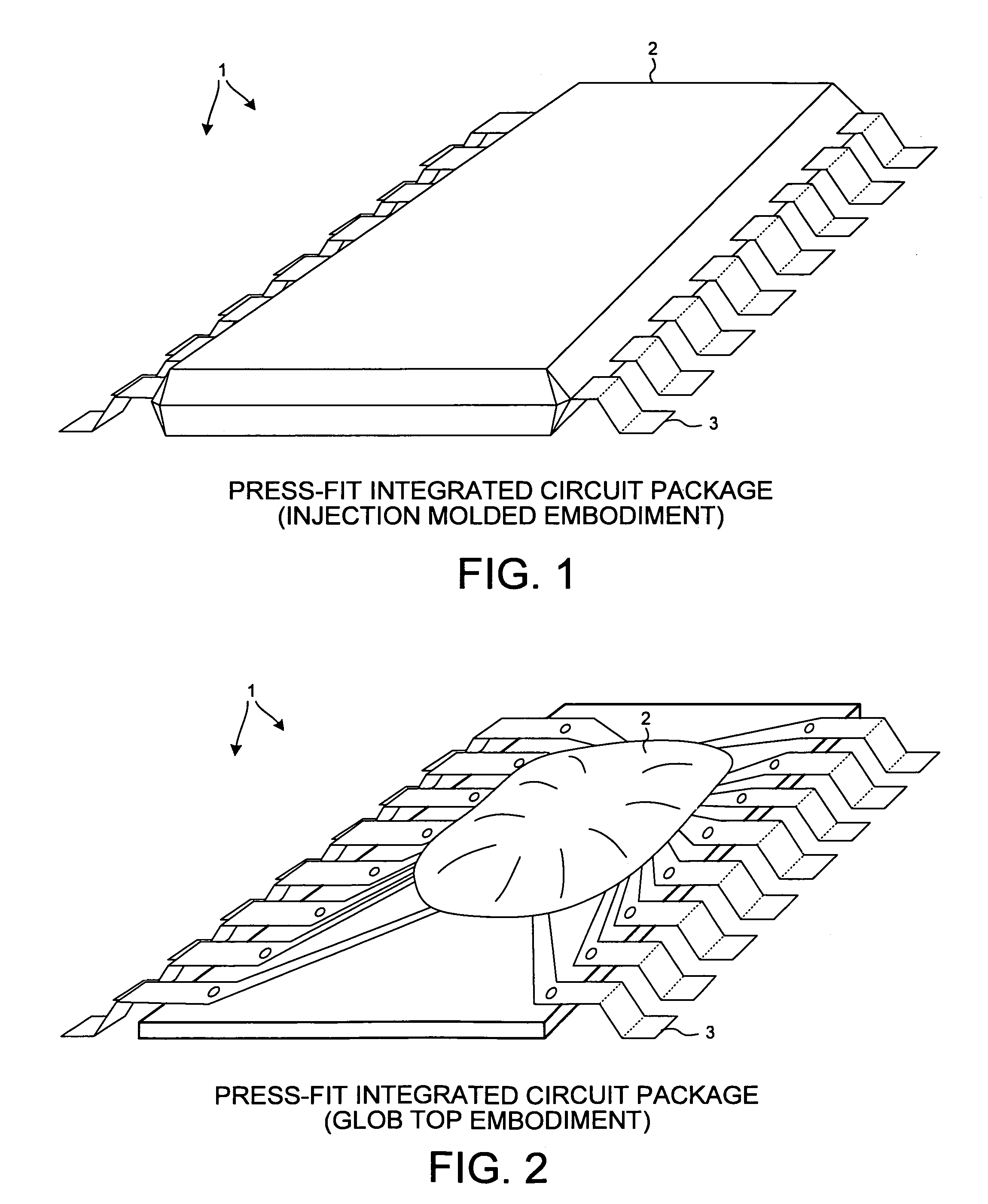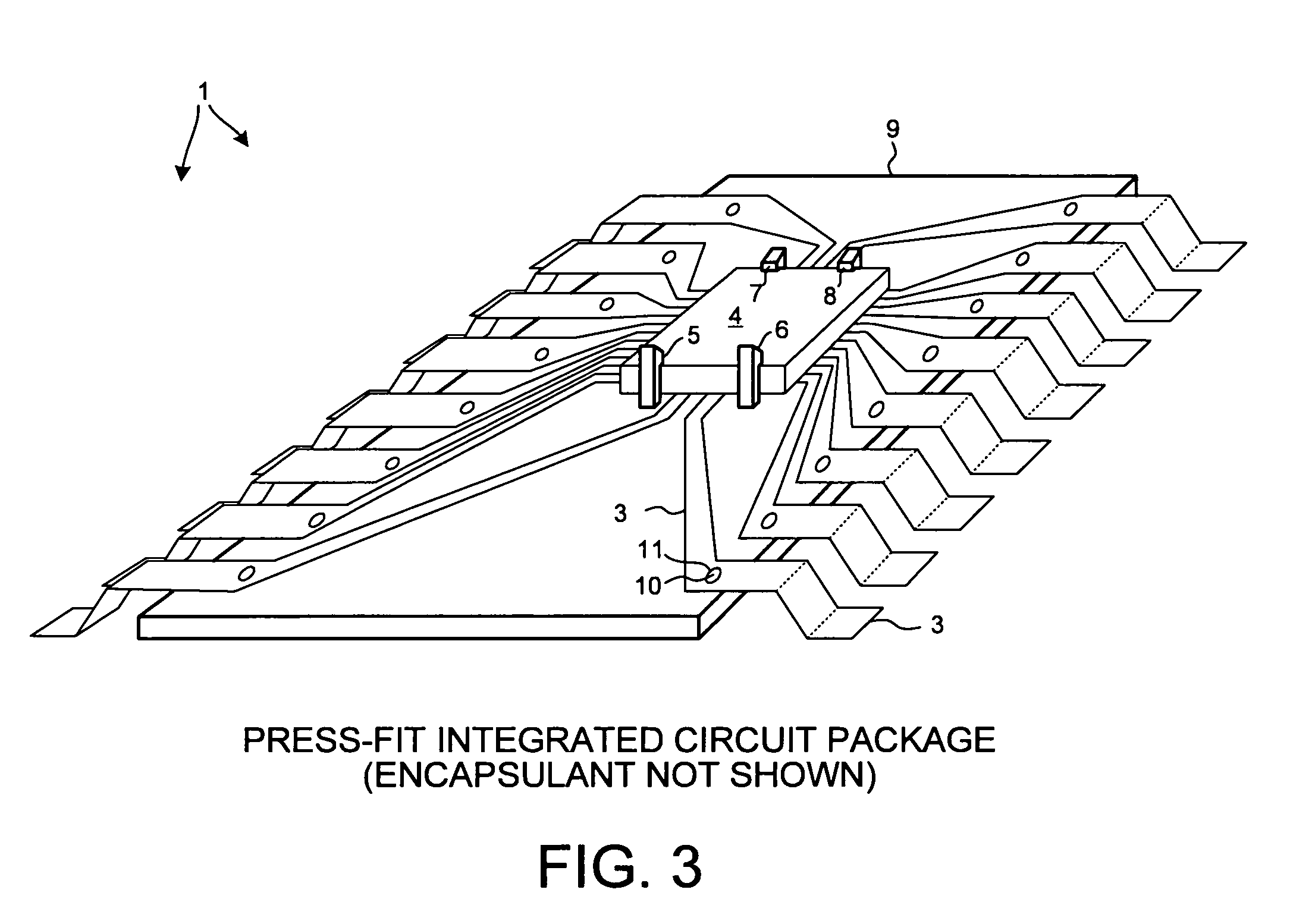Press-fit integrated circuit package involving compressed spring contact beams
- Summary
- Abstract
- Description
- Claims
- Application Information
AI Technical Summary
Benefits of technology
Problems solved by technology
Method used
Image
Examples
second embodiment
[0036]FIG. 10 is a top-down diagram of the leads and substrate and integrated circuit of a In this embodiment, the pins of the substrate are not thermally-welded to hold the leads in place. The leads do not have holes for accommodating such pins. Rather, the leads of the leadframe press-fit into a second set of retaining clips. Each lead in the diagram is held on two sides by a retaining clip. For example, lead 3 is held in place by retaining clips 26 and 27. The spring contact beam portion ends of the leads are held in place in the lateral dimension by guide slots in guide rails. FIG. 11 is a perspective view of guide slots in the guide rail 28 of FIG. 10. Lead 3 extends through guide slot 29. The spring contact beam portion ends of the leads are held down by integrated circuit 4. Accordingly, in the embodiment of FIG. 10, the leads are attached to the substrate in a press-fit mechanical pressing operation without the use of adhesives or thermal welding.
third embodiment
[0037]FIG. 12 is a cross-sectional diagram of a portion of a In this embodiment, injection molded substrate 9 includes an indentation 30. Integrated circuit 9 is placed in the indentation face side up. The leadframe is attached to the substrate so that the spring contact beams bend downward into the indentation. The leadframe is pressed down onto substrate 9, and the tops of the alignment and retaining pins of substrate 9 are melted to form the mushroom shape and to fix the leads to substrate 9. The cut and bending step is then performed to singulate the leads from each other and to form the outward ends of the leads into the desired shape. Die 4 is held in place by the pressing action of the spring contact beam portions without the use of flexible plastic retaining clips extensions of substrate 9.
fourth embodiment
[0038]FIG. 13 is a cross-sectional diagram of a portion of a In this embodiment, integrated circuit die 4 is not disposed in an indentation in substrate 9, rather the leads are formed such that they extend upward and over the edge of the upper face side of the die. The die 4 is disposed on the upper planar major surface of substrate 9 as illustrated. Die 4 is held in place by the pressing action of the spring contact beam portions without the use of flexible plastic retaining clips extensions of substrate 9.
[0039]Although certain specific embodiments are described above for instructional purposes, the teachings of this patent document have general applicability and are not limited to the specific embodiments described above. The die retaining clips may be disposed at the four corners of the die cavity, to hold down the four corners of the die, as opposed to the placement illustrated in FIG. 3. A die retaining clip may extend along substantially the entire length of a side of the di...
PUM
 Login to view more
Login to view more Abstract
Description
Claims
Application Information
 Login to view more
Login to view more - R&D Engineer
- R&D Manager
- IP Professional
- Industry Leading Data Capabilities
- Powerful AI technology
- Patent DNA Extraction
Browse by: Latest US Patents, China's latest patents, Technical Efficacy Thesaurus, Application Domain, Technology Topic.
© 2024 PatSnap. All rights reserved.Legal|Privacy policy|Modern Slavery Act Transparency Statement|Sitemap



